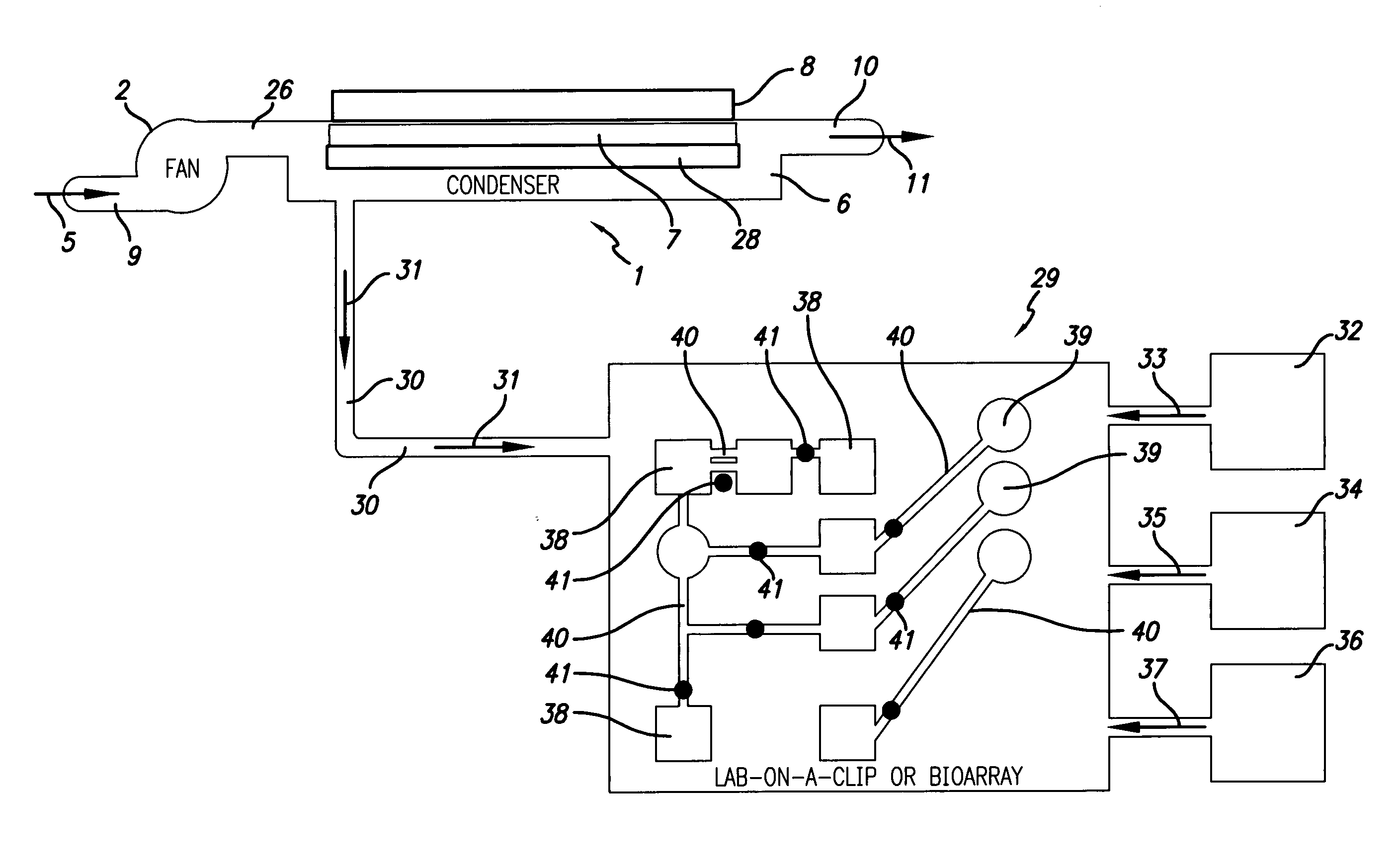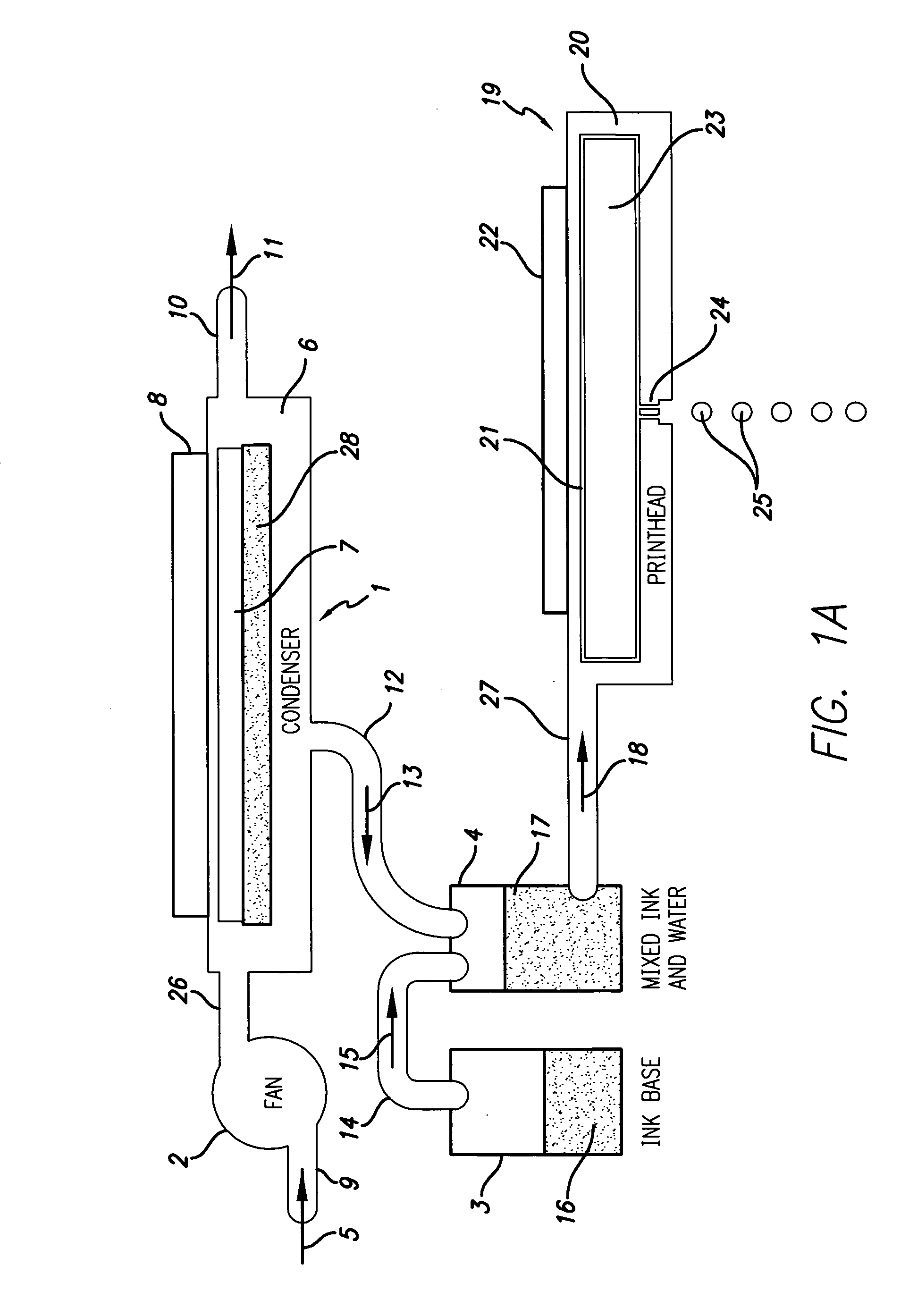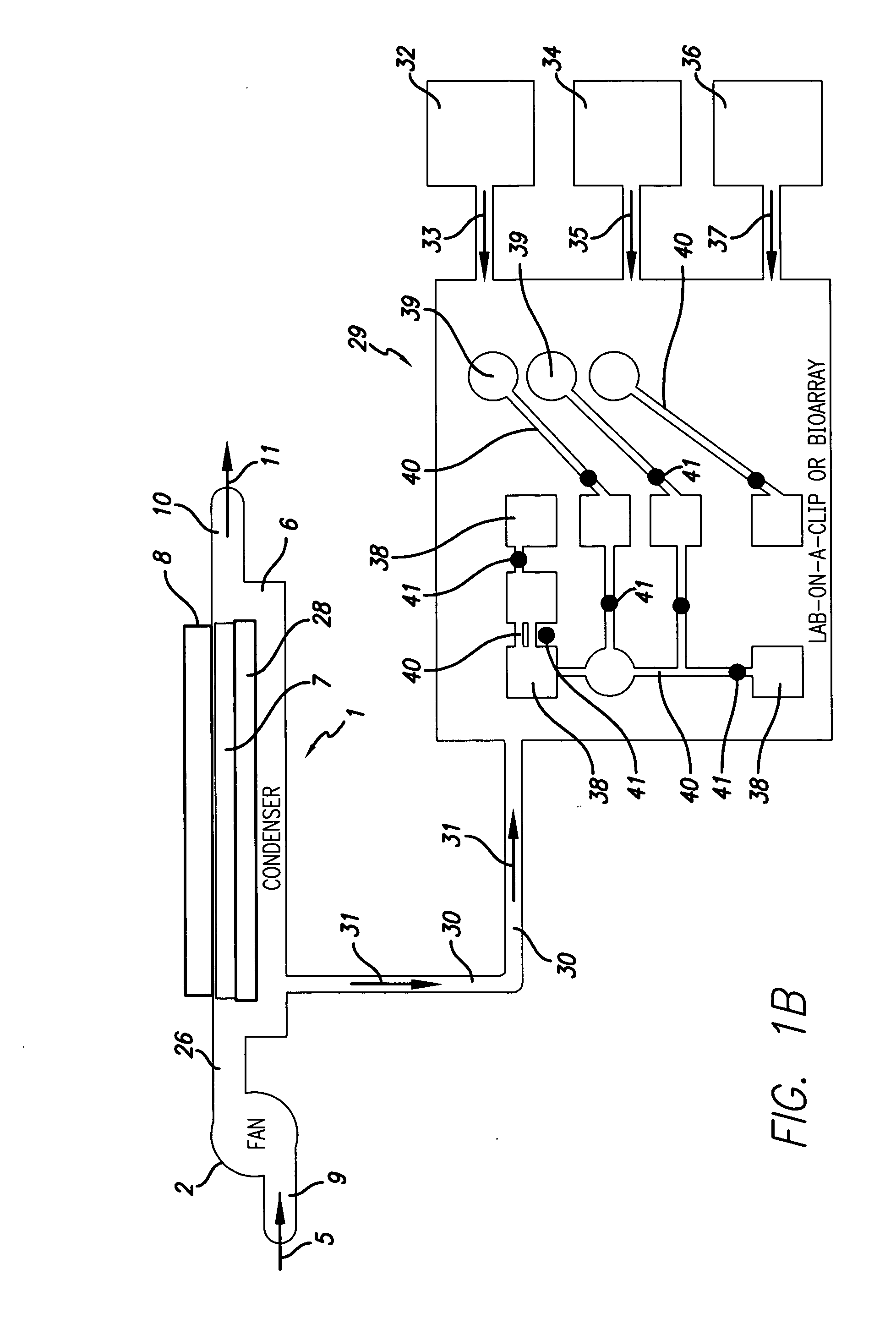Cooling, condensation and freezing of atmospheric water or a microfluidic working-material in or on microfluidic devices
a microfluidic working and atmospheric water technology, applied in the direction of cleaning using liquids, instruments, chemical indicators, etc., can solve the problems of clogging of tiny nozzles and orifices, and affecting the quality of microfluidic products
- Summary
- Abstract
- Description
- Claims
- Application Information
AI Technical Summary
Benefits of technology
Problems solved by technology
Method used
Image
Examples
Embodiment Construction
[0050]Moving now to FIG. 1A, we see a water-condensation unit 1 whose condensed water is routed, ultimately, to a microfluidic printhead 19. A fan 2 is shown drawing inwards ambient air in the form of flow 5 through conduit 9 and passing it into output conduit 26. Conduit 26 feeds into condenser 1. The structure of water condenser 1 includes a body 6 having a chamber 7. A cooling or chilling means 8 is thermally coupled to the chamber 7. The cooling means 8 could, for example, be a semiconductor-type electronic junction solid-state cooling chip (e.g., a thermojunction), which is preferred, or could be a known expansion nozzle refrigerator subsystem. Condenser 1 is depicted having a gaseous output conduit 10 with an outflow 11. In essence, ambient air 5 is drawn into the condenser 1 and has liquid water 28 condensed out of it. The drier air is then exhausted out conduit 10 as flow 11. It will be noted that condensate water 28 preferably sits in chamber or reservoir 7. Those familiar ...
PUM
| Property | Measurement | Unit |
|---|---|---|
| humidity | aaaaa | aaaaa |
| concentration | aaaaa | aaaaa |
| pH | aaaaa | aaaaa |
Abstract
Description
Claims
Application Information
 Login to View More
Login to View More - R&D
- Intellectual Property
- Life Sciences
- Materials
- Tech Scout
- Unparalleled Data Quality
- Higher Quality Content
- 60% Fewer Hallucinations
Browse by: Latest US Patents, China's latest patents, Technical Efficacy Thesaurus, Application Domain, Technology Topic, Popular Technical Reports.
© 2025 PatSnap. All rights reserved.Legal|Privacy policy|Modern Slavery Act Transparency Statement|Sitemap|About US| Contact US: help@patsnap.com



